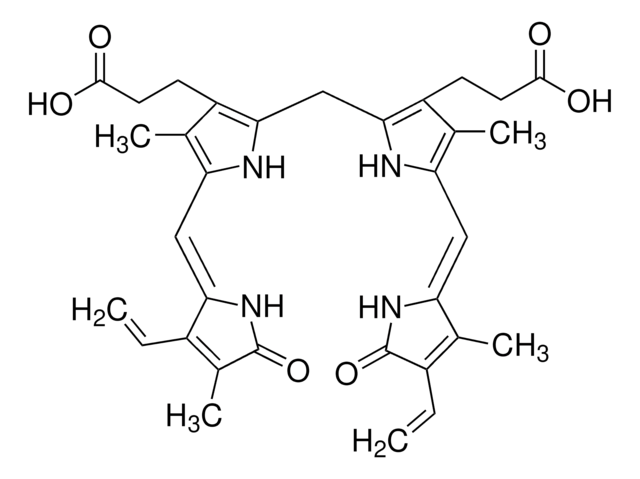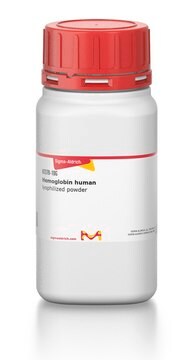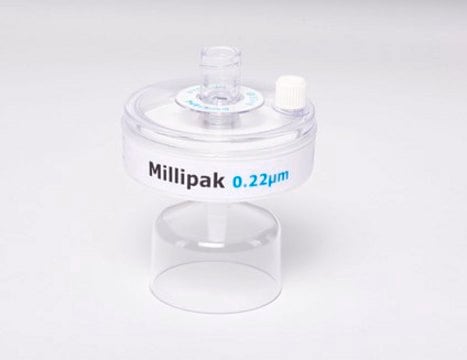2011
Bilirubin
solid, bile pigment, Calbiochem®
Synonim(y):
Bilirubin
About This Item
Polecane produkty
product name
Bilirubin, Principal pigment of bile and one of the major end products of hemoglobin decomposition.
Poziom jakości
Postać
solid
producent / nazwa handlowa
Calbiochem®
warunki przechowywania
OK to freeze
protect from light
kolor
red-brown
rozpuszczalność
chloroform: 1 mg/mL
alkaline solution: soluble
Warunki transportu
ambient
temp. przechowywania
10-30°C
InChI
1S/C33H36N4O6/c1-7-20-19(6)32(42)37-27(20)14-25-18(5)23(10-12-31(40)41)29(35-25)15-28-22(9-11-30(38)39)17(4)24(34-28)13-26-16(3)21(8-2)33(43)36-26/h7-8,13-14,34-35H,1-2,9-12,15H2,3-6H3,(H,36,43)(H,37,42)(H,38,39)(H,40,41)/b26-13-,27-14-
Klucz InChI
BPYKTIZUTYGOLE-IFADSCNNSA-N
Opis ogólny
Działania biochem./fizjol.
Rekonstytucja
Inne uwagi
Cell permeable: no
Reversible: no
Product does not compete with ATP.
Primary Target
Informacje prawne
Kod klasy składowania
11 - Combustible Solids
Klasa zagrożenia wodnego (WGK)
WGK 2
Temperatura zapłonu (°F)
Not applicable
Temperatura zapłonu (°C)
Not applicable
Certyfikaty analizy (CoA)
Poszukaj Certyfikaty analizy (CoA), wpisując numer partii/serii produktów. Numery serii i partii można znaleźć na etykiecie produktu po słowach „seria” lub „partia”.
Masz już ten produkt?
Dokumenty związane z niedawno zakupionymi produktami zostały zamieszczone w Bibliotece dokumentów.
Klienci oglądali również te produkty
Nasz zespół naukowców ma doświadczenie we wszystkich obszarach badań, w tym w naukach przyrodniczych, materiałoznawstwie, syntezie chemicznej, chromatografii, analityce i wielu innych dziedzinach.
Skontaktuj się z zespołem ds. pomocy technicznej









